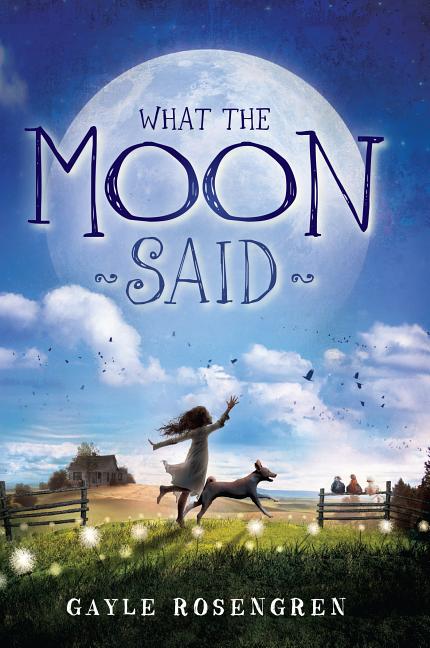Book Descriptions
for What the Moon Said by Gayle Rosengren
From Cooperative Children's Book Center (CCBC)
After Esther’s father loses his job in Chicago during the Depression, the family manages to buy a small farm in Wisconsin. Her immigrant parents include her warm German father and her more emotionally distant, Russian-born mother. In fact, Esther’s mother is so distant that Esther sometimes wonders if her mother loves her, especially because she seems much more affectionate with Esther’s siblings. As the family adjusts to rural life, Esther makes a good friend in Bethany, and loves her new teacher at the small school. But superstitious Ma soon forbids Esther from spending time with Bethany because of her new friend’s mole, which Esther’s mother believes is a devil’s mark. Soon Esther can’t help but blame a lot of the family hardship on her mother, especially as the Depression continues to bear down and makes their future on the farm she’s come to love uncertain. There’s an old-fashioned sensibility to this story that goes beyond its setting and time period. The storytelling itself, with several dramatic plot elements leading to revelations, has the feel of a piece from an earlier time. But if there is a sense of predictability, it comes with comfort and great satisfaction, even as Esther’s story ends happily but not in the prefect way she might have wished. (Ages 7–10)
CCBC Choices 2015. © Cooperative Children's Book Center, Univ. of Wisconsin - Madison, 2015. Used with permission.
From the Publisher
Fans of the Little House books will fall in love with Esther.
Thanks to her superstitious mother, Esther knows some tricks for avoiding bad luck: toss salt over your left shoulder, never button your shirt crooked, and avoid black cats. But even luck can't keep her family safe from the Great Depression. When Pa loses his job, Esther's family leaves their comfy Chicago life behind for a farm in Wisconsin.
Living on a farm comes with lots of hard work, but that means there are plenty of opportunities for Esther to show her mother how helpful she can be. She loves all of the farm animals (except the mean geese) and even better makes a fast friend in lively Bethany. But then Ma sees a sign that Esther just knows is wrong. If believing a superstition makes you miserable, how can that be good luck?
Debut author Gayle Rosengren brings the past to life in this extraordinary, hopeful story.
Thanks to her superstitious mother, Esther knows some tricks for avoiding bad luck: toss salt over your left shoulder, never button your shirt crooked, and avoid black cats. But even luck can't keep her family safe from the Great Depression. When Pa loses his job, Esther's family leaves their comfy Chicago life behind for a farm in Wisconsin.
Living on a farm comes with lots of hard work, but that means there are plenty of opportunities for Esther to show her mother how helpful she can be. She loves all of the farm animals (except the mean geese) and even better makes a fast friend in lively Bethany. But then Ma sees a sign that Esther just knows is wrong. If believing a superstition makes you miserable, how can that be good luck?
Debut author Gayle Rosengren brings the past to life in this extraordinary, hopeful story.
Publisher description retrieved from Google Books.


